Foraging plantain leaves for tea is simple and enjoyable. First, identify the two main varieties: broadleaf and narrowleaf plantain. Next, choose a location with rich, well-drained soil and low human activity. When harvesting, select vibrant leaves, cut them cleanly near the base, and do it on dry days to avoid mold. After harvesting, rinse the leaves, pat them dry, and decide whether to use them fresh or dried. Finally, make certain you're foraging sustainably by taking only what you need. This approach not only enhances your tea experience but sets the stage for more rewarding foraging adventures.
Identify Plantain Leaf Varieties
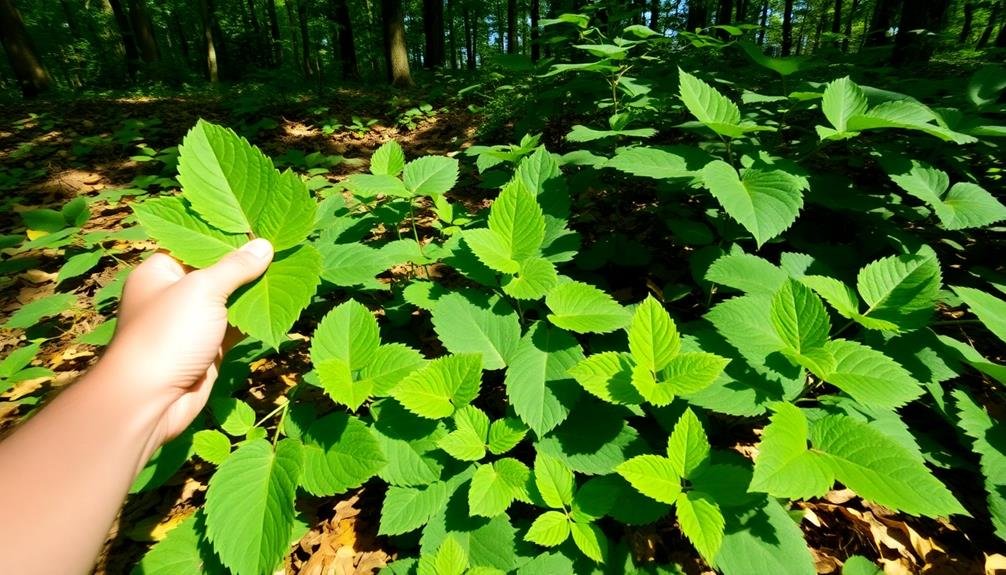
Often overlooked, plantain leaves come in several varieties, each offering unique benefits for tea-making. The most common types you'll encounter are broadleaf plantain (Plantago major) and narrowleaf plantain (Plantago lanceolata). Broadleaf plantain features large, wide leaves that are easy to identify, while narrowleaf plantain has long, slender leaves that can be more challenging to spot.
When you forage, pay attention to the leaf shape and texture. Broadleaf plantain leaves are thick and slightly wrinkled, with a green hue that can range from bright to dark. On the other hand, narrowleaf plantain leaves are smooth and have a more vibrant green color, often growing in a rosette pattern close to the ground.
Both varieties are rich in nutrients and have distinct flavors, making them excellent for tea. You may find that broadleaf plantain offers a more earthy taste, while narrowleaf plantain has a slightly sweeter profile. Knowing these differences allows you to select the right leaves for your desired tea experience, enhancing your foraging adventure.
Don't forget to check the leaves for any signs of pests or damage before you harvest!
Choose the Right Foraging Location
Finding the right location for foraging plantain leaves plays a significant role in the quality of your tea. You want to choose areas that are free from pesticides and pollution, as these factors can affect the taste and safety of your brew. Look for spots in parks, along trails, or in your own backyard, ensuring the plants are thriving and healthy.
Consider the following factors when selecting your foraging location:
| Factor | Description | Importance |
|---|---|---|
| Soil Quality | Rich, well-drained soil | Affects plant growth |
| Sunlight Exposure | Full sun to partial shade | Influences leaf flavor |
| Proximity to Water | Near streams or ponds | Provides moisture |
| Human Activity | Low foot traffic | Reduces contamination risk |
Harvesting Techniques for Plantain Leaves
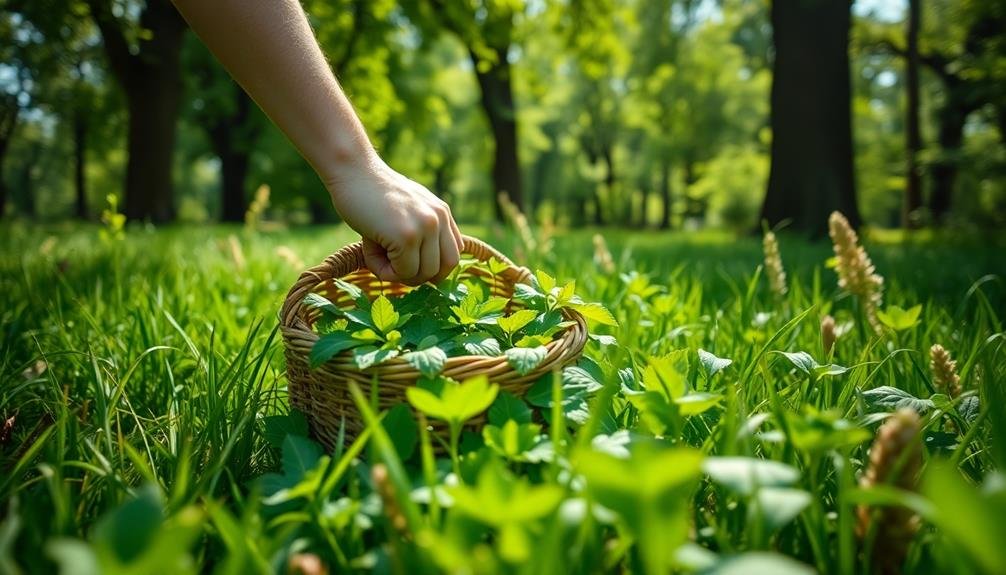
When you're ready to harvest plantain leaves, it's essential to use the right techniques to guarantee both quality and sustainability.
Start by selecting healthy, mature leaves. Look for leaves that are vibrant green and free from pests or significant damage. Avoid picking the smaller, younger leaves, as they're vital for the plant's growth.
Next, use a sharp knife or scissors to cut the leaves. Make the cut close to the base of the leaf stem, but don't harm the plant itself. This approach allows the plant to continue thriving and producing more leaves for future harvests. Aim to take only what you need, leaving enough foliage for the plant to regenerate.
Additionally, harvest on a dry day. Wet leaves can harbor mold or bacteria, which can affect the quality of your tea.
After cutting, gently place the leaves in a breathable container like a basket or cloth bag. Avoid plastic bags, as they trap moisture and can lead to spoilage.
Preparing Leaves for Tea
After you've harvested the plantain leaves, it's time to prepare them for tea. Start by rinsing the leaves gently under cold water to remove any dirt or insects. Pat them dry with a clean cloth or paper towel. Depending on your taste preference, you can choose to use fresh or dried leaves. If you opt for dried leaves, spread them out in a single layer on a clean surface and allow them to air dry for a few days until they're crisp.
Here's a simple guide to help you process the leaves:
| Step | Action | Purpose |
|---|---|---|
| Rinse | Clean the leaves | Removes dirt & contaminants |
| Dry | Pat dry | Prepares for storage or use |
| Choose | Fresh or dried | Affects flavor & potency |
| Chop (optional) | Cut into smaller pieces | Enhances infusion in tea |
Once your leaves are prepped, you can store them in an airtight container if you're not using them immediately. Enjoy brewing your plantain tea, knowing you've taken the right steps to prepare it properly!
Tips for Sustainable Foraging
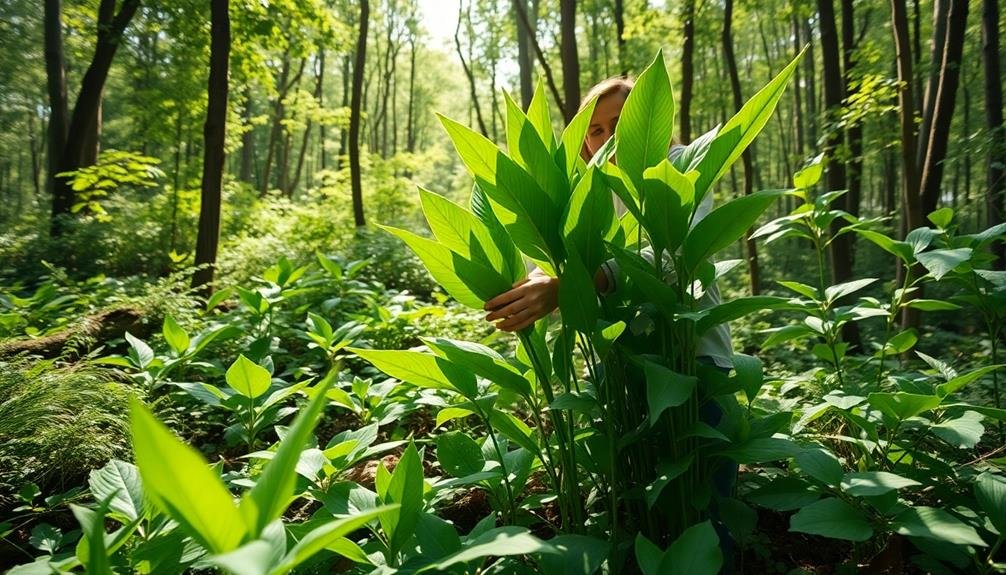
Sustainable foraging is essential for preserving plant populations and ecosystems, so keeping a few key principles in mind can make a big difference.
First, always take only what you need. Harvesting a small amount guarantees that the plant can continue to thrive and reproduce. Aim to leave at least 50% of the plant intact, allowing it to regenerate.
Next, familiarize yourself with local regulations regarding foraging. Some areas may have restrictions to protect certain species. By respecting these laws, you help maintain biodiversity in your region.
When foraging, choose diverse locations rather than overharvesting in one spot. This not only protects local ecosystems but also guarantees you can find healthy plants in the future.
Be mindful of the environment around you. Avoid areas that have been treated with pesticides or herbicides, as these chemicals can harm your health.
Frequently Asked Questions
Are There Any Health Risks Associated With Consuming Plantain Leaves?
Yes, there can be health risks when consuming plantain leaves, especially if you're allergic or ingest contaminated plants. Always guarantee you identify the leaves correctly and wash them thoroughly before using them in any form.
Can Plantain Leaves Be Foraged Year-Round or Only in Specific Seasons?
You can forage plantain leaves year-round, as they're resilient and grow in various environments. Just be mindful of the specific conditions, like soil and weather, which can affect their abundance during different seasons.
How Do I Identify Non-Edible Plants That Resemble Plantain Leaves?
To identify non-edible plants resembling plantain leaves, look for differences in leaf shape, texture, and size. Familiarize yourself with local flora, and always double-check with reliable sources before consuming any unfamiliar plants.
What Other Uses Do Plantain Leaves Have Besides Making Tea?
You can use plantain leaves for wound healing, as they have anti-inflammatory properties. They're great for wrapping food, making poultices, and even creating natural remedies for respiratory issues. Explore their versatility beyond just tea!
Are There Specific Regions Where Plantain Leaves Grow Abundantly?
Yes, plantain leaves thrive in temperate regions worldwide, often found in grassy areas, roadsides, and gardens. You'll typically spot them in North America, Europe, and parts of Asia, where they grow abundantly and easily.
In Summary
To sum up, foraging plantain leaves for tea can be a rewarding experience. By identifying the right varieties, choosing suitable locations, and using proper harvesting techniques, you'll guarantee a successful outing. Remember to prepare the leaves correctly for the best flavor and always practice sustainable foraging to protect the environment. With these tips in mind, you're ready to enjoy a soothing cup of plantain tea while connecting with nature. Happy foraging!


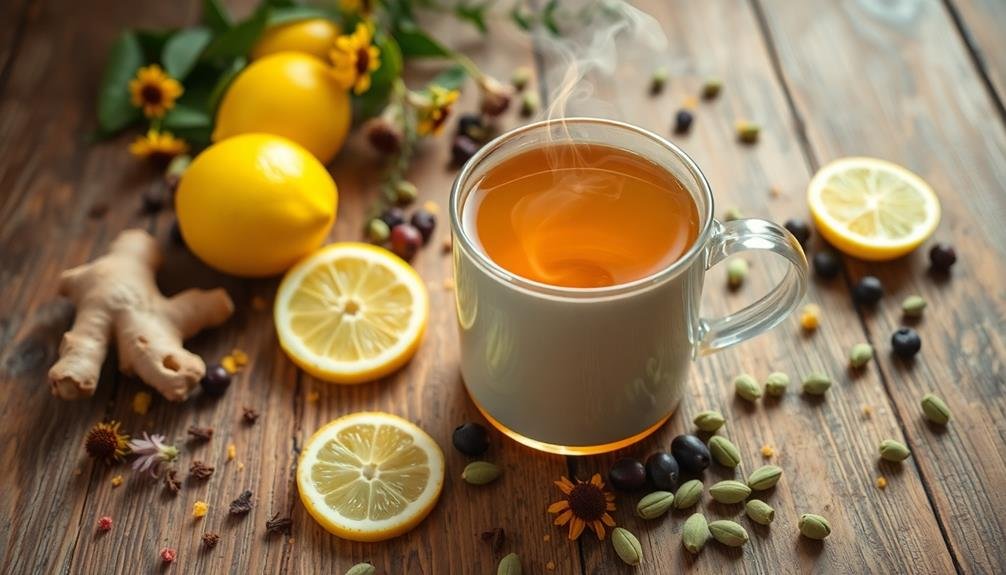
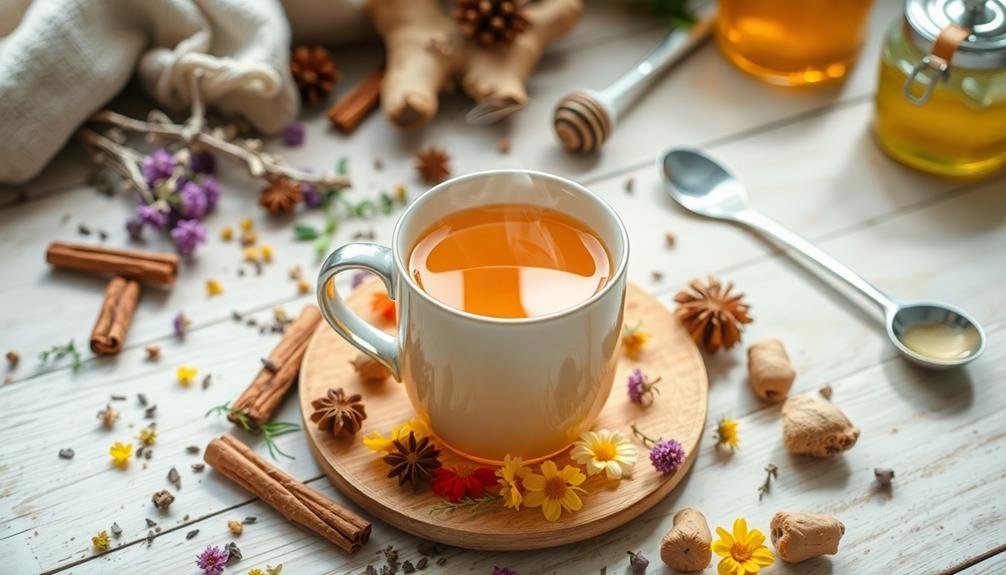
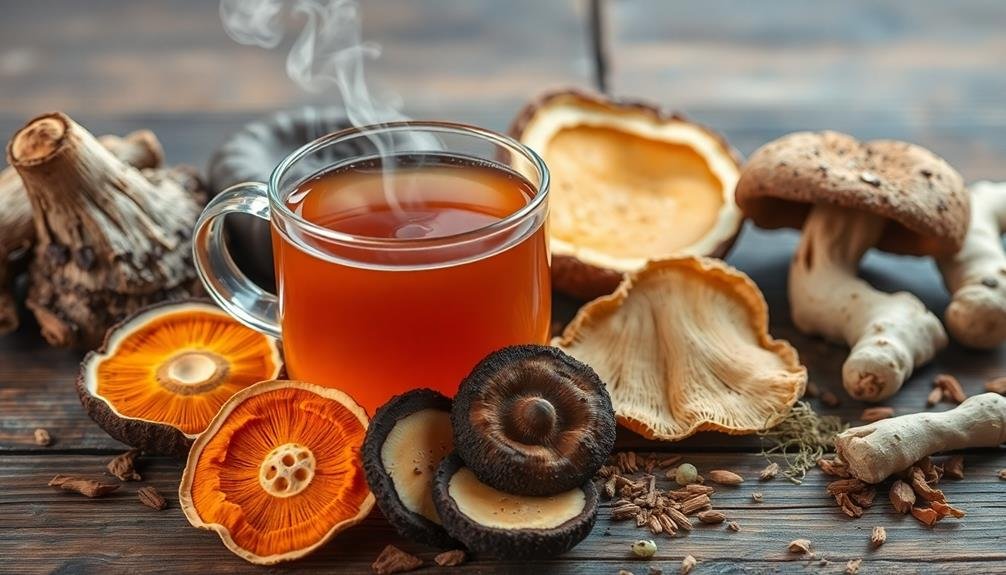
Leave a Reply